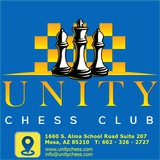📘 59...R×a6!
Wesley So knows well that after 60.Rg6+ Kf7 61.R×a6 B×a6 62.K×f3 although White has “on paper” two extra pawns the ending is completely drawn.
Wesley So knows well that after 60.Rg6+ Kf7 61.R×a6 B×a6 62.K×f3 although White has “on paper” two extra pawns the ending is completely drawn.
📘 📘 15.c5
The series of intermediate moves continues. After the neutral 15.b×c3 d×c4 16.Nd2 Nb6 Black enjoys stability on light squares.
The series of intermediate moves continues. After the neutral 15.b×c3 d×c4 16.Nd2 Nb6 Black enjoys stability on light squares.
The same position occurred between Svidler and Ivanchuk in 2007.
15...B×h2+!?
An instructive moment. Black's central pawns are not weak, but could become so if any of the c5- or d4-squares would become available to the white minor pieces. The move played by Ivanchuk is the only one to avoid such a situation. For instance, if 15...B×c5 16.d×c5 Ne4 then 17.Nd4 Nd×c5 18.f3 Nf6 19.N×c6 with better chances for White.
Or, similarly, 15...Ne4 16.c×d6 N×d6 17.Bf4 Ne4 18.Rac1 and Black will probably have to play ...c5 anyway.
16.N×h2 Ne4 17.f3 Ng3 18.Bf4 Nf5
15...B×h2+!?
An instructive moment. Black's central pawns are not weak, but could become so if any of the c5- or d4-squares would become available to the white minor pieces. The move played by Ivanchuk is the only one to avoid such a situation. For instance, if 15...B×c5 16.d×c5 Ne4 then 17.Nd4 Nd×c5 18.f3 Nf6 19.N×c6 with better chances for White.
Or, similarly, 15...Ne4 16.c×d6 N×d6 17.Bf4 Ne4 18.Rac1 and Black will probably have to play ...c5 anyway.
16.N×h2 Ne4 17.f3 Ng3 18.Bf4 Nf5
📘 11...d5!
Carlsen rapidly develops his queenside and open up the game as soon as possible.
11...d6 12.Nxe4 Bf5 13.d3 White has a slight advantage.
11...b6 12.Nxe4 Bb7 13.Be2 Black has given up a pawn for unclear compensation.
Carlsen rapidly develops his queenside and open up the game as soon as possible.
11...d6 12.Nxe4 Bf5 13.d3 White has a slight advantage.
11...b6 12.Nxe4 Bb7 13.Be2 Black has given up a pawn for unclear compensation.
📘 22.Rfc1!
After this move black is faced with many difficulties:
1.The c4-knight is pinned. 2.The c4-square is an unstable square, mainly since b5 can be undermined with Ra5. 3.Black's unmoved f8-bishop cannot develop without trouble.
22.Nf3? It's unreasonable for White to move his knight from the center.
22.Rac1? The wrong rook! White should keep his rook on the open a-file.
After this move black is faced with many difficulties:
1.The c4-knight is pinned. 2.The c4-square is an unstable square, mainly since b5 can be undermined with Ra5. 3.Black's unmoved f8-bishop cannot develop without trouble.
22.Nf3? It's unreasonable for White to move his knight from the center.
22.Rac1? The wrong rook! White should keep his rook on the open a-file.
📕Unity Chess Multiple Choice 159
anonymous poll
B: Qa4 – 8
👍👍👍👍👍👍👍 62%
A: g4 – 5
👍👍👍👍 38%
C: Be1
▫️ 0%
👥 13 people voted so far.
anonymous poll
B: Qa4 – 8
👍👍👍👍👍👍👍 62%
A: g4 – 5
👍👍👍👍 38%
C: Be1
▫️ 0%
👥 13 people voted so far.
📕Unity Chess Multiple Choice 160
C: Be4 – 10
👍👍👍👍👍👍👍 63%
A: B×d5 – 4
👍👍👍 25%
B: 0-0 – 2
👍 13%
👥 16 people voted so far.
C: Be4 – 10
👍👍👍👍👍👍👍 63%
A: B×d5 – 4
👍👍👍 25%
B: 0-0 – 2
👍 13%
👥 16 people voted so far.
Spectators follow the course of the 4th game of the World Chess Championship match between Mikhail Botvinnik (champion) and Mikhail Tal (challenger). 22nd March, 1960.
@UnityChess
@UnityChess
Mikhail Tal (Latvia) v. Paul Keres (Estonia), 2nd USSR People's Spartakiad, Moscow, August 1959.
@UnityChess
@UnityChess
